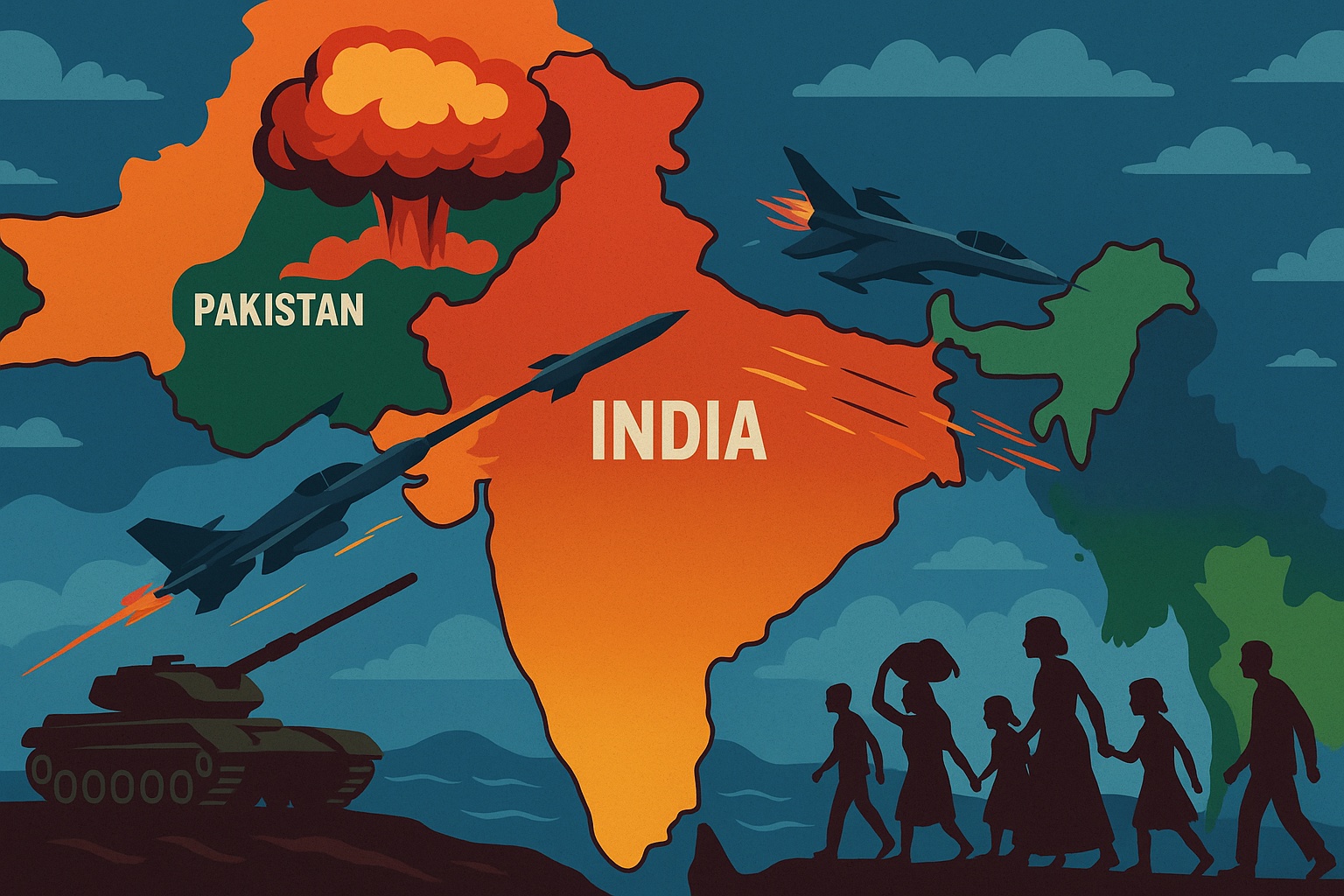India and Pakistan are two powerful countries with nuclear weapons, and they had a difficult relationship for a long time, with many past conflicts and continuing tensions.If a big war happens between them, it would be very dangerous for the whole South Asian region. Although the main war would happen between India and Pakistan, neighbouring country Bangladesh would also face serious problems. Because of its location, close historical connections, and trade relationships with both countries, Bangladesh could be deeply affected by such a war.
Introduction
The violent escalation in April 2025 has brought the long-standing India-Pakistan conflict dangerously close to a full-scale war. As a country situated between these two giants, Bangladesh would face severe geopolitical, economic, and humanitarian challenges. The immediate impact would likely be a surge in refugees fleeing the conflict zones in Kashmir and northern India, putting enormous pressure on Bangladesh’s already stretched resources and infrastructure. Furthermore, trade routes that Bangladesh relies on, particularly those involving India, would be disrupted, leading to shortages of essential goods and increased costs for consumers and industries alike.
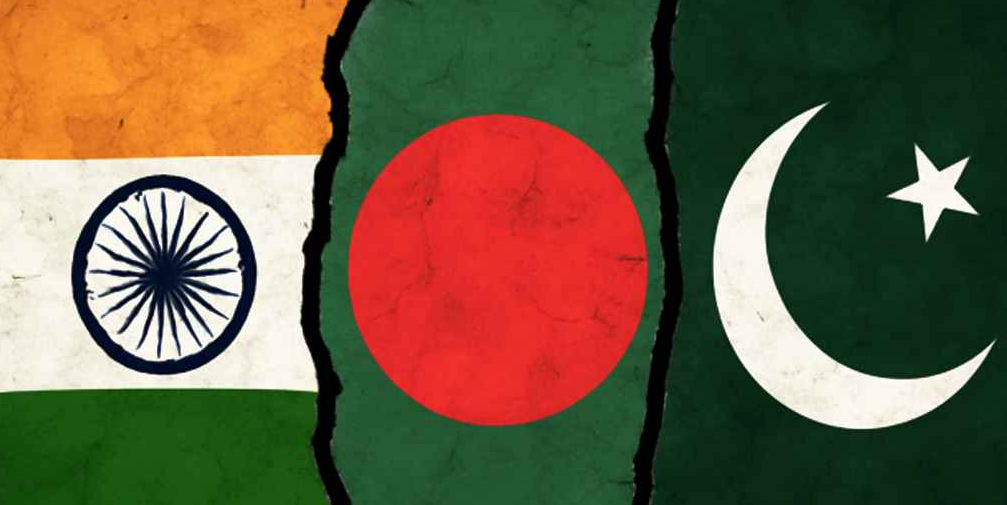
Bangladesh’s economy, closely tied to both India and Pakistan through trade and labor migration, could suffer significant setbacks. The garment industry, a major contributor to Bangladesh’s GDP, depends heavily on raw materials imported by India. Any disruption could halt production lines and cause job losses. Additionally, diplomatic relations might become strained as Bangladesh attempts to navigate a neutral stance while maintaining peaceful ties with both countries. The risk of political instability within Bangladesh could rise, as public opinion might be divided on how to respond to the conflict. Social tensions, especially in border areas, could intensify, and there could be a spike in communal violence or unrest.
Beyond immediate social and economic challenges, environmental concerns also emerge in such a scenario. Modern warfare often results in ecological damage, air pollution, water contamination, and destruction of farmland that can cross national borders. Bangladesh, being downstream of many river systems originating in India and Pakistan, could face long-term consequences for its agriculture and water supply. Public health systems would be tested by potential influxes of injured refugees and outbreaks of disease exacerbated by the breakdown of sanitation and clean water services.
How Recent Events Triggered India-Pakistan Tensions
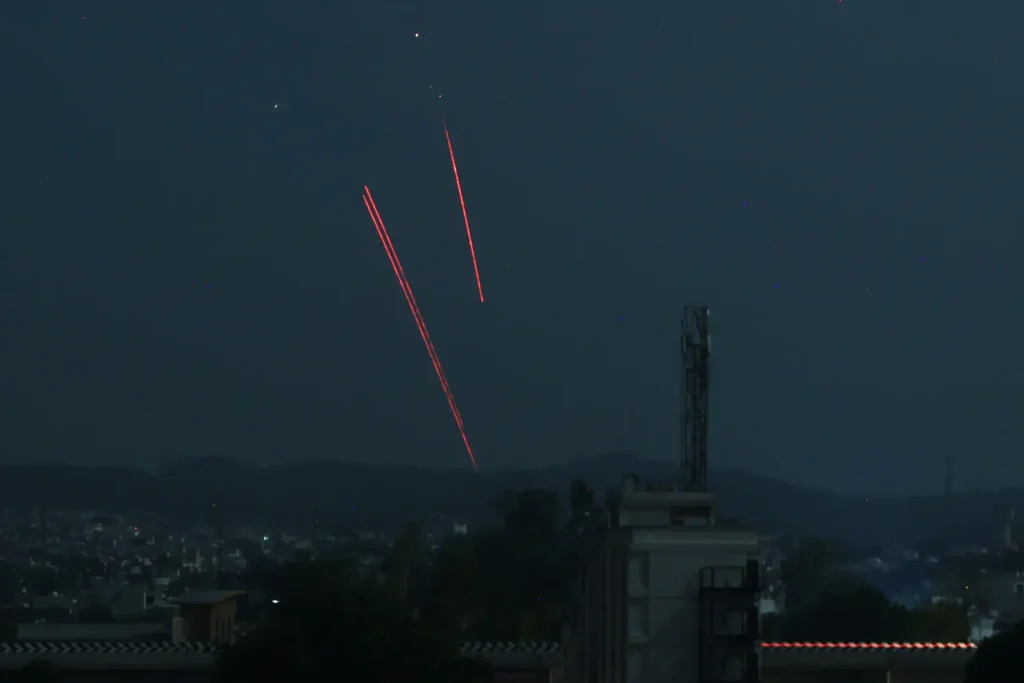
In April 2025, the tension between India and Pakistan grew quickly after a terrorist attack happened in the Baisaran Valley near Pahalgam, Jammu and Kashmir. The attack killed 27 people, including 25 Hindu tourists, one Christian tourist, and one local Muslim. A group called The Resistance Front (TRF), connected to the Pakistan-based terrorist group Lashkar-e-Taiba, said they were behind the attack. India blamed Pakistan for supporting the attack, which led to a series of revenge actions.
On May 7, India started “Operation Sindoor,” where Indian Air Force jets launched missile strikes on several places in Pakistan, such as Bahawalpur, Muridke, and Muzaffarabad. Pakistan fought back with its own military strikes, and this made the situation much worse.Both countries fought in the air, with Pakistani forces shooting down Indian fighter jets using Chinese-made planes and missiles. This was a big moment because it was the first time these planes were used in real battles. The use of such advanced weapons showed that other countries were involved, making the conflict even more serious.
Worried about a full war, the United States stepped in to help. Officials like Secretary of State Marco Rubio and Vice President JD Vance helped India and Pakistan talk to each other. On May 10, 2025, both sides agreed to stop fighting for a while. But soon after, each country accused the other of breaking the agreement, showing that peace was still very fragile.
1. How Bangladesh’s Relations and Borders Could Change During the War
If India and Pakistan go to war, it could shake the peace of the whole region. Bangladesh might face pressure to take sides, deal with refugees coming in, and face problems with trade and security.
1.1 Border Security and Military Realignment
Bangladesh shares over 4,000 kilometers of its border with India, making it susceptible to the spillover effects of any military conflict between India and Pakistan. In the event of war, India may increase its military presence along the eastern frontier to prevent any infiltration or to secure its northeastern states, which are connected to the rest of the country via the narrow Siliguri Corridor. Such militarization could lead to heightened tensions along the India-Bangladesh border, potentially disrupting cross-border trade and movement.
Moreover, the increased military activity could strain Bangladesh’s own border security forces, who would need to monitor and manage any unintended incursions or refugee flows resulting from the conflict. The possibility of insurgent groups exploiting the chaos to cross into Bangladesh cannot be ruled out, necessitating heightened vigilance and resource allocation to border management.
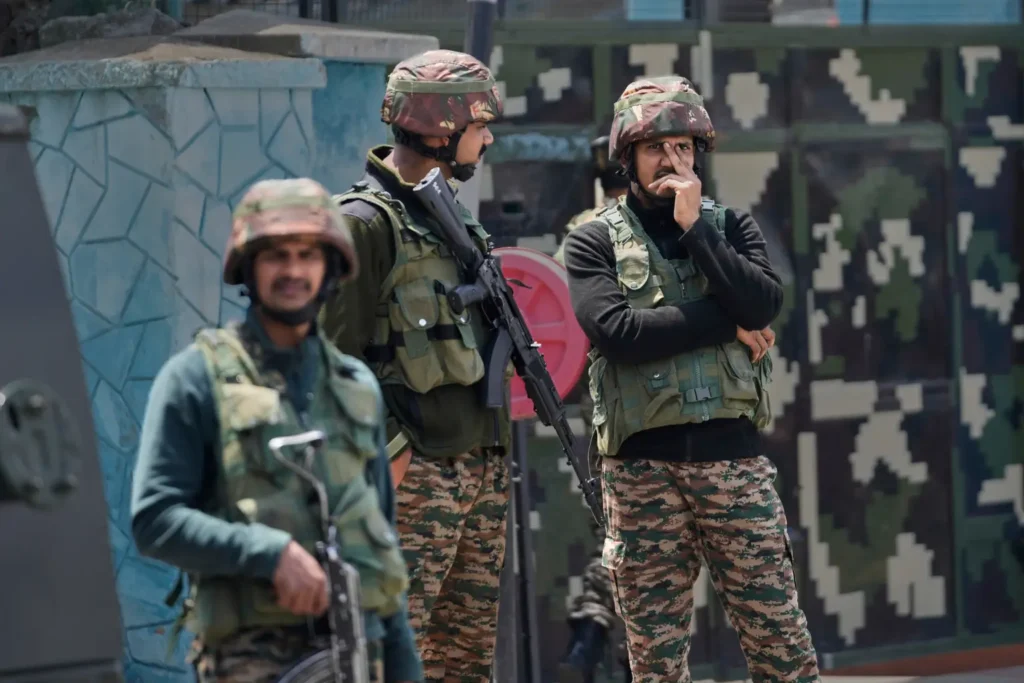
1.2 Diplomatic Neutrality and Strategic Balancing
Bangladesh has traditionally maintained a policy of neutrality in the India-Pakistan conflict, emphasizing peaceful coexistence and regional cooperation. However, a full-scale war between its two neighbors would test this stance. India may expect Bangladesh to support its position diplomatically or at least prevent any anti-India activities from being conducted on its soil. Conversely, Pakistan may seek Bangladesh’s support in international forums, leveraging shared religious and historical ties.
Navigating this diplomatic tightrope would be challenging for Bangladesh. Aligning too closely with either side could jeopardize its relationships and economic interests. Therefore, Bangladesh would need to engage in proactive diplomacy, possibly advocating for peace and offering to mediate, to maintain its neutral stance while safeguarding its national interests.
1.3 Influence of External Powers
The involvement of major powers like China and the United States in the India-Pakistan conflict adds another layer of complexity to the regional dynamics. China’s close ties with Pakistan, including military cooperation and infrastructure investments under the China-Pakistan Economic Corridor (CPEC), could embolden Pakistan’s position. Simultaneously, China’s growing influence in Bangladesh, through investments and strategic partnerships, may impact Bangladesh’s foreign policy decisions.
On the other hand, the United States’ role in brokering a ceasefire between India and Pakistan demonstrates its continued interest in South Asian stability. Bangladesh may find itself caught between these competing influences, necessitating a careful balancing act to maintain its sovereignty and pursue its national interests without alienating key partners.

2. How the War Could Affect Bangladesh’s Economy
A war between India and Pakistan could damage Bangladesh’s economy. Trade routes might be blocked, exports could fall, and prices of goods could go up. Investors may also become scared to invest in the region, slowing down economic growth.
2.1 Trade Route Disruptions
India is one of Bangladesh’s largest trading partners, with bilateral trade valued at approximately $16 billion annually. A war between India and Pakistan could severely disrupt this trade, especially if border crossings are closed or if transportation routes are deemed unsafe. Such disruptions would affect the import of essential goods, including raw materials for Bangladesh’s textile industry, and could lead to shortages and increased prices.
2.2 Foreign Direct Investment (FDI) and Currency Volatility
Investors tend to avoid high-risk regions. FDI from India, China, Japan, and the West may stall, with ongoing projects (like metro rail or power plants) delayed. Stock markets would be volatile, and the Taka may depreciate against the U.S. dollar.Bangladesh’s foreign exchange reserves—already under pressure in 2024 due to global inflation—could dip further, causing economic instability. Banking and trade financing would also suffer due to increased regional risk premiums.
2.3 Energy Security Challenges
Bangladesh relies on India for a portion of its electricity supply through cross-border energy trade. In the event of a conflict, these energy imports could be disrupted, leading to power shortages that would affect industries, businesses, and households. Additionally, the increased demand for energy during wartime in India could reduce the availability of surplus electricity for export to Bangladesh. The disruption of energy supplies would necessitate the exploration of alternative sources, which may be more expensive or less reliable, further straining Bangladesh’s economy and infrastructure.
2.4 Impact on Tourism and Services Sector
The tourism industry in Bangladesh, particularly in areas frequented by Indian tourists, could suffer due to travel restrictions and safety concerns arising from the conflict. Hotels, restaurants, and other service providers that cater to tourists may experience a decline in business, leading to job losses and reduced income for workers in the sector. Moreover, the general atmosphere of instability could deter international tourists, compounding the negative impact on the tourism industry. The loss of revenue from tourism would affect not only businesses but also government tax collections and foreign exchange earnings.
Read More: Operation Sindoor Sparks Controversy: A Patriotic Film or PR Timing Gone Wrong?
3. Humanitarian and Social Implications
If war breaks out between India and Pakistan, many people could flee to safer places, and Bangladesh might see a rise in refugees. There could also be fear and tension among people, especially in border areas, affecting daily life and peace in society.
3.1 Refugees from the War
Bangladesh has dealt with major refugee crises before, such as the Rohingya influx from Myanmar and the resettlement of Bihari refugees after the 1971 war. If an India-Pakistan war begins, many civilians from India’s northeastern states and Kashmir—especially Bengali-speaking Muslims who may fear persecution—could flee into Bangladesh seeking safety. Experts estimate that hundreds of thousands of people might cross the border within a short period, putting enormous pressure on Bangladesh’s border districts. These areas already have limited resources, so a sudden influx would strain shelters, healthcare, food, water, and sanitation services. Overcrowding in refugee camps could increase risks of disease and worsen living conditions for both refugees and local communities.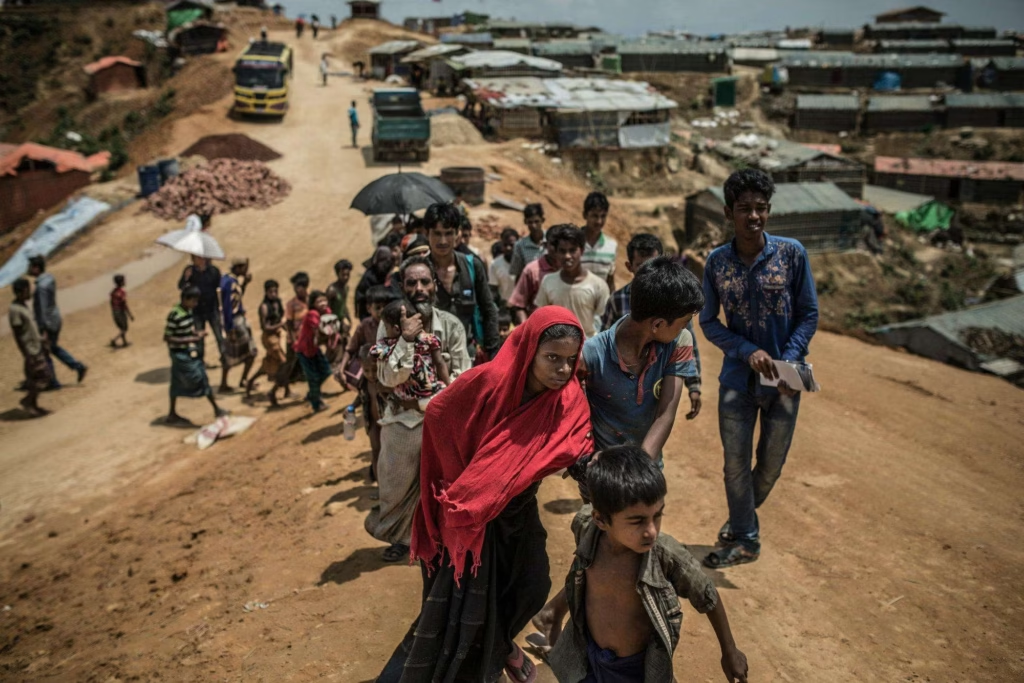
3.2 Rise in Communal Tensions
Bangladesh’s diverse population includes religious minorities such as Hindus, Buddhists, Christians, and indigenous groups. A war between India and Pakistan, often framed in religious terms, could spark communal tensions within Bangladesh. Misinformation and rumors spread on social media might deepen divisions and create fear among different communities. Past conflicts have shown how easily such tensions can lead to violence, protests, or even curfews. The government and law enforcement would face serious challenges maintaining peace and protecting vulnerable groups. Failure to control communal unrest could weaken national unity and disrupt social harmony.
3.3 Labor Migration and Global Perception
Remittances from Bangladeshis working abroad are vital to the country’s economy, contributing over 6% to the GDP. Many Bangladeshis live and work in India, Pakistan, the Gulf, and Southeast Asia. A war could trap migrant workers in conflict zones or force sudden returns, disrupting the flow of remittances. This would hurt household incomes and slow economic growth. Additionally, Bangladesh’s international image could suffer if global agencies label it as part of an unstable region. This might discourage foreign investment, tourism, and new job opportunities abroad. The government would need to work hard diplomatically to protect Bangladesh’s reputation and support its overseas workers during such a crisis.
4. Environmental and Infrastructural Risks
A war between India and Pakistan could damage the environment through pollution, forest fires, or destruction of nature. If missiles or bombs are used near borders, it could also harm roads, buildings, and important infrastructure in nearby countries like Bangladesh.
4.1 Nuclear or Chemical Fallout
If the conflict between India and Pakistan becomes more serious and involves nuclear or chemical weapons, Bangladesh could suffer from dangerous environmental effects. Winds and rivers like the Ganges and Brahmaputra could carry radioactive dust or harmful chemicals into Bangladesh. This pollution could contaminate water sources and farmland, which many people depend on for drinking water and food. Toxic substances from damaged factories or broken dams could add to the problem. These effects would harm crops, cause health problems for many people, and make it harder for Bangladesh to recover even after the war ends.
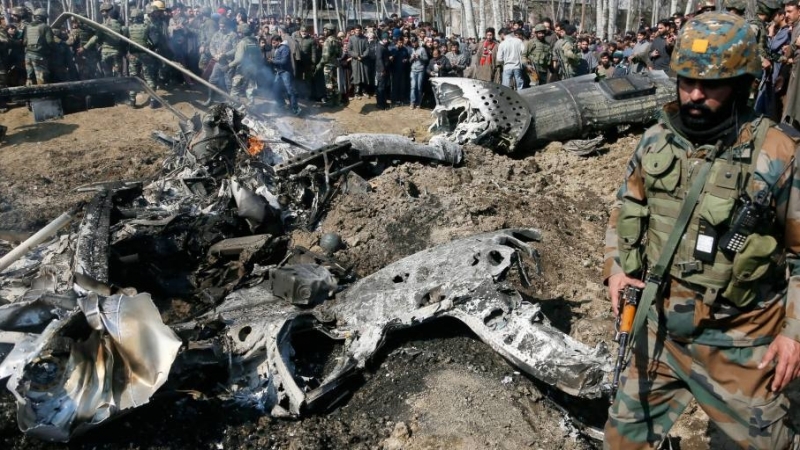
4.2 Infrastructure Overload
The war and its consequences would put a huge strain on Bangladesh’s infrastructure. Hospitals and clinics, especially in border areas, would face many more patients, including injured soldiers, refugees, and sick civilians. Refugee shelters might become overcrowded and unable to provide basic needs. Because of the urgent demands, the government might have to take money away from important projects like building roads, schools, and improving services, and use it instead for emergency help and defense. Also, important agencies that prepare for natural disasters like cyclones could be busy dealing with war-related emergencies, making Bangladesh less ready for storms and floods. This would put millions of people at greater risk of suffering from natural disasters during the war.
Read More: Pakistan Authorizes Military Response Following India’s ‘Operation Sindoor’ Strike
5. Bangladesh’s Policy Options and Strategic Responses
Bangladesh should stay neutral and promote peace through diplomacy. It can strengthen border security, prepare for refugee support if needed, and work with international partners to protect its economy and people from the effects of the war.
5.1 Strengthening Border Security
In the event of a full-scale war between India and Pakistan, Bangladesh’s first priority would be to protect its borders. The Border Guard Bangladesh (BGB), along with the Armed Forces Division (AFD), must improve border patrols, increase surveillance with drones or cameras, and strengthen their ability to detect illegal crossings or militant movements. Border towns might need buffer zones to prevent conflict spillover. If large numbers of refugees arrive, setting up proper screening, medical checkups, and quarantine units will be essential to prevent the spread of diseases and maintain order.
5.2 Diplomatic Initiatives and Peace Mediation
Bangladesh should play a smart and active role in diplomacy. As a member of international groups like SAARC, BIMSTEC, and the United Nations, Bangladesh can use its voice to call for peace and dialogue. Dhaka could be offered as a neutral venue for peace talks between India and Pakistan, which would not only help reduce tensions but also improve Bangladesh’s image as a responsible and peace-loving country. It is also important for Bangladesh to maintain a balanced and neutral stance—avoiding taking sides while firmly supporting peace, regional stability, and the protection of civilians.
5.3 Strategic Reserve and Resource Management
During wartime crises, essential supplies often run short. Bangladesh must prepare by building strategic reserves of food, fuel, medicine, and other emergency supplies. Stockpiling in advance will help the country handle shortages and reduce dependence on imports during uncertain times. Promoting agricultural self-reliance and investing in renewable energy—like solar and wind power—can help reduce pressure on fuel imports. Emergency logistics centers should also be set up across the country to support relief efforts and quick transportation of goods and medical help during emergencies.
5.4 Public Awareness and Cybersecurity
In any modern conflict, misinformation spreads quickly and can cause panic. The government should launch awareness campaigns through television, social media, and community programs to educate people about the situation, promote unity, and fight rumors. Real-time updates and public service announcements will help people stay informed and calm. At the same time, cyberattacks and propaganda can pose threats to national security. Strengthening cybersecurity units to protect government systems, media outlets, and critical infrastructure from hacking or digital sabotage is extremely important. Vigilance in the digital space will help ensure safety, public confidence, and national stability.
6. Recent Developments (2023–2025)
6.1 Kashmir Escalation and Ceasefire Violations
In early 2025, the situation in Kashmir became more tense than usual. There were frequent violations of the ceasefire along the Line of Control (LoC), the border that separates Indian- and Pakistani-controlled areas of Kashmir. These clashes involved gunfire, small-scale attacks, and military movements on both sides. Reports also say that Pakistan moved some of its short-range tactical missiles closer to the front lines, raising alarm in the region. In response, India activated its Cold Start Doctrine, a military strategy that allows quick and powerful strikes without giving the enemy time to react. These moves signaled serious preparations for possible war and made regional stability more fragile.
6.2 China-Pakistan Military Drills and U.S.-India Defense Pact
In late 2024, China and Pakistan conducted joint military drills in the Arabian Sea. These exercises showed their growing strategic partnership and military coordination. At the same time, India signed a new defense pact with the United States. This agreement allows both countries to share military intelligence and use each other’s bases for refueling and logistics. As a result, the region is becoming more divided into opposing strategic groups: one led by the U.S. and India, and the other supported by China and Pakistan.
Even though Bangladesh is not directly part of these alliances, it is keeping a close watch. This is especially important because the U.S. Navy has started increasing its activities in the Bay of Bengal, an area very close to Bangladesh. This military buildup near its maritime borders could bring Bangladesh into the spotlight, whether it wants to be involved or not.
6.3 Rohingya Crisis and Bangladesh’s Border Concerns
Bangladesh is already dealing with a major humanitarian issue the Rohingya refugee crisis. Since 2017, over a million Rohingyas have taken shelter in camps in Cox’s Bazar after fleeing violence in Myanmar. The country’s resources are stretched thin as it tries to provide food, housing, and healthcare to these refugees.
If a new war breaks out between India and Pakistan, and refugees begin arriving from northeastern India or Pakistan, it would create a second refugee crisis. This would add even more pressure to Bangladesh’s border security, humanitarian resources, and diplomatic efforts. It could also weaken Bangladesh’s ability to demand international support for resolving the original Rohingya issue.
6.4 Public Sentiment in Bangladesh
Inside Bangladesh, most people still support peace and non-violence. However, social media tells a more complex story. Some young people online are showing polarized views. A small group expresses sympathy for Pakistan in the name of Islamic brotherhood, while others show strong support for India, especially among those who believe in secularism and regional stability.
This ideological divide although not dominant can cause tension if the war intensifies. It may lead to public protests, online hate speech, or even communal clashes. To protect internal peace, the government must work hard to unite the population through clear communication, education, and national solidarity messages.
7. How Bangladesh Might Benefit During an India-Pakistan War
Although war usually brings suffering and instability, sometimes it also creates unexpected opportunities—especially for nearby countries that choose peace and smart policies. If a war breaks out between India and Pakistan, and Bangladesh stays neutral while handling the situation wisely, the country could experience some positive effects. Below are several such possibilities explained
7.1 Gaining International Respect Through Peaceful Neutrality
If Bangladesh chooses not to take sides and focuses on promoting peace, it can gain the respect of the international community. For example, during the Cold War, countries like Switzerland became respected for their neutrality and hosting peace talks. Similarly, Bangladesh can offer Dhaka as a neutral place for peace negotiations between India and Pakistan. This would increase Bangladesh’s visibility on the global stage and encourage more diplomatic visits and investments. It would show that Bangladesh is a mature and responsible country, ready to contribute to regional stability.
If Bangladesh supports peace efforts during the conflict, it could gain more responsibilities in international peacekeeping missions. Bangladesh is already one of the top contributors to UN peacekeeping forces worldwide. For example, Bangladeshi soldiers have served in Africa and the Middle East to help maintain peace. A stronger role during an India-Pakistan conflict could lead to more funding and training, boosting Bangladesh’s global image and bringing economic benefits
7.2 Creating New Business and Trade Opportunities
As India and Pakistan become busy with war, many international companies might look for safer countries to do business with. For instance, during past regional conflicts, countries like Vietnam and Malaysia gained new factory investments as companies avoided conflict zones. Bangladesh’s garment industry, which is already strong, could receive more international orders as buyers seek stable places to produce clothes. This would create more jobs for workers and increase the country’s export earnings, helping Bangladesh’s economy grow even in difficult times.
7.3 Boosting Local Industries and Self-Reliance
During any regional crisis, imported goods might become scarce or expensive. For example, during the COVID-19 pandemic, many countries realized how important it was to produce food and medicines locally. Bangladesh could take this chance to grow more crops, develop local medicine factories, and invest in renewable energy like solar power. This would reduce dependence on imports from India or other countries, making Bangladesh more self-reliant and stronger economically in the long run.
7.4 Growth in IT and Cybersecurity Sectors
War today is not only fought with bombs but also through the internet. For example, Estonia became a world leader in cybersecurity after facing cyberattacks in 2007. If Bangladesh faces threats of cyberattacks or misinformation during the India-Pakistan conflict, it will be forced to improve its digital defenses. This will create jobs for young IT experts, encourage investments in technology, and help protect important government and business information from hackers. This growth in technology sectors would benefit the country even after the conflict ends.
7.5 Improving Emergency and Disaster Management Systems
If the country prepares for possible war-related emergencies, such as refugees or shortages, it can also improve its response to natural disasters. Bangladesh already has strong programs to handle floods and cyclones, like the Cyclone Preparedness Program. By improving hospitals, shelters, and food supplies during the war, Bangladesh will also be better prepared to face future disasters. For example, after the 2004 tsunami, countries that improved their emergency systems became much better at saving lives in later disasters. Bangladesh could follow this model.
7.6 Strengthening National Security and Defense Capacity
During regional conflict, Bangladesh may increase investments in border safety, intelligence, and military training. For example, after the 1971 Liberation War, Bangladesh focused on building its defense forces to protect its independence. Similarly, strengthening the military now will help Bangladesh secure its borders against smuggling, trafficking, or illegal crossings. Even after the war ends, these improved security systems will protect Bangladesh from future threats, whether they come from terrorism, natural disasters, or political instability.
When a country faces outside threats, people often come together. For example, during World War II, many countries experienced a strong sense of unity despite internal differences. If Bangladesh stays peaceful during the India-Pakistan conflict, people from different religions and political groups may unite to protect the country and support each other. This sense of national unity would reduce internal conflicts and make Bangladesh stronger during and after the crisis.
7.7 Inspiring Innovation and Youth Leadership
Difficult times often inspire young people to come up with new ideas. For example, during the Syrian crisis, many young Syrians created digital platforms to help refugees find shelter and aid. In Bangladesh, the youth could develop mobile apps for distributing food, education platforms for displaced children, or solar energy projects for refugee camps. This crisis could spark a new generation of leaders and innovators who help their communities and the country grow stronger.
India and Pakistan Agree to Ceasefire

U.S. President Donald Trump announced that India and Pakistan have agreed to a complete and immediate ceasefire. The announcement came through a post on his social media platform, Truth Social. Trump said that the decision came after lengthy overnight discussions led by the United States. He added that both countries showed wisdom and common sense by agreeing to stop military actions.
Pakistan’s Deputy Prime Minister, Ishaq Dar, also confirmed the news of the ceasefire. He stated that Pakistan remains committed to peace and security in the region, but without compromising its sovereignty or territorial integrity.ndia’s Foreign Secretary, Vikram Misri, also confirmed the ceasefire. He said that a top Pakistani military officer called India’s top army leader. During the phone conversation, both sides agreed to stop all military actions on land, in the air, and at sea.
Conclusion
Although Bangladesh may not be directly involved in a war between India and Pakistan, the consequences would reach its borders quickly and deeply. Because of its geographic location, economic ties, and social connections with both countries, Bangladesh stands to face serious challenges. The most urgent problem would likely be humanitarian. Thousands of people may flee the war zones and try to enter Bangladesh, leading to a refugee crisis, shortage of resources, and pressure on public services. This could also result in social unrest and increased communal tension.
Economically, Bangladesh could suffer from trade disruptions, rising prices, and declining remittances if migrant workers in conflict zones are forced to return. In the longer term, international investors and development partners may treat Bangladesh as part of a high-risk conflict region, which could slow down economic growth and progress. However, there is also an opportunity in this crisis. Bangladesh can show diplomatic maturity and leadership by staying neutral and promoting peace. It can use global platforms like the UN, SAARC, and BIMSTEC to push for a peaceful solution. It can also strengthen its border security, cyber defenses, and emergency preparedness to protect its people.
References
Share via:

